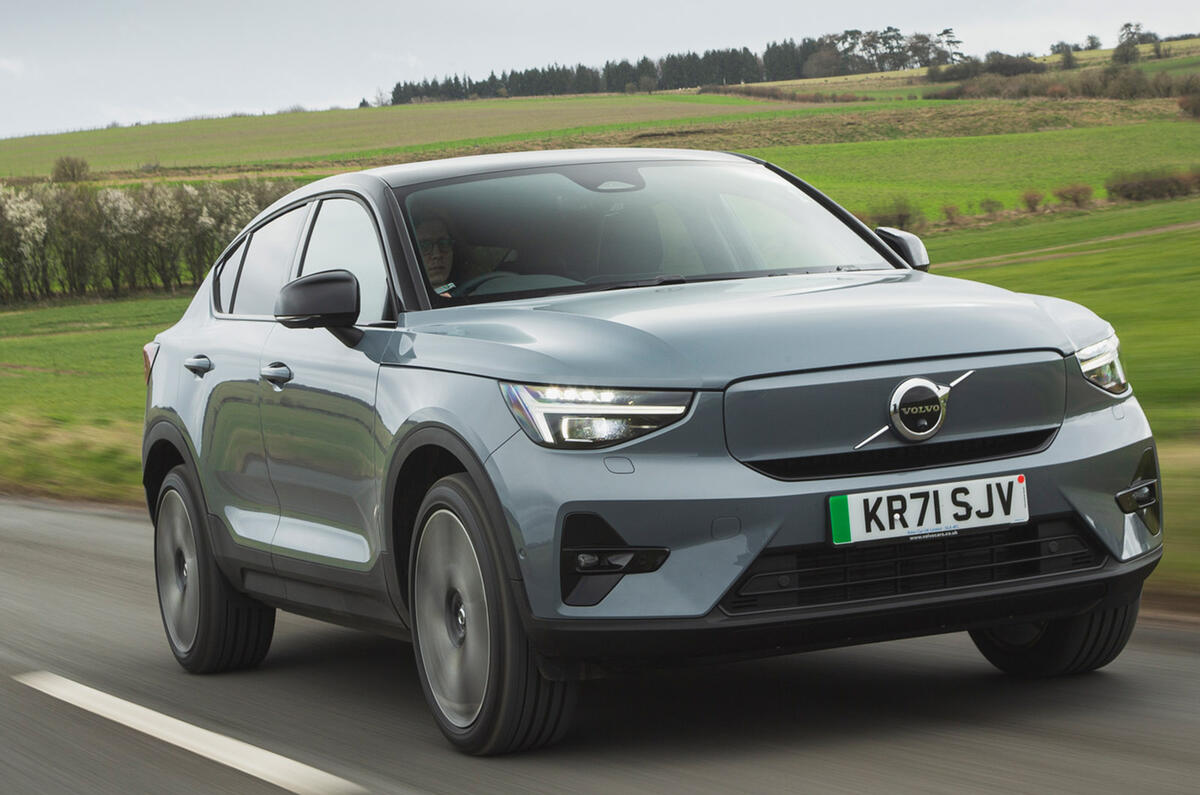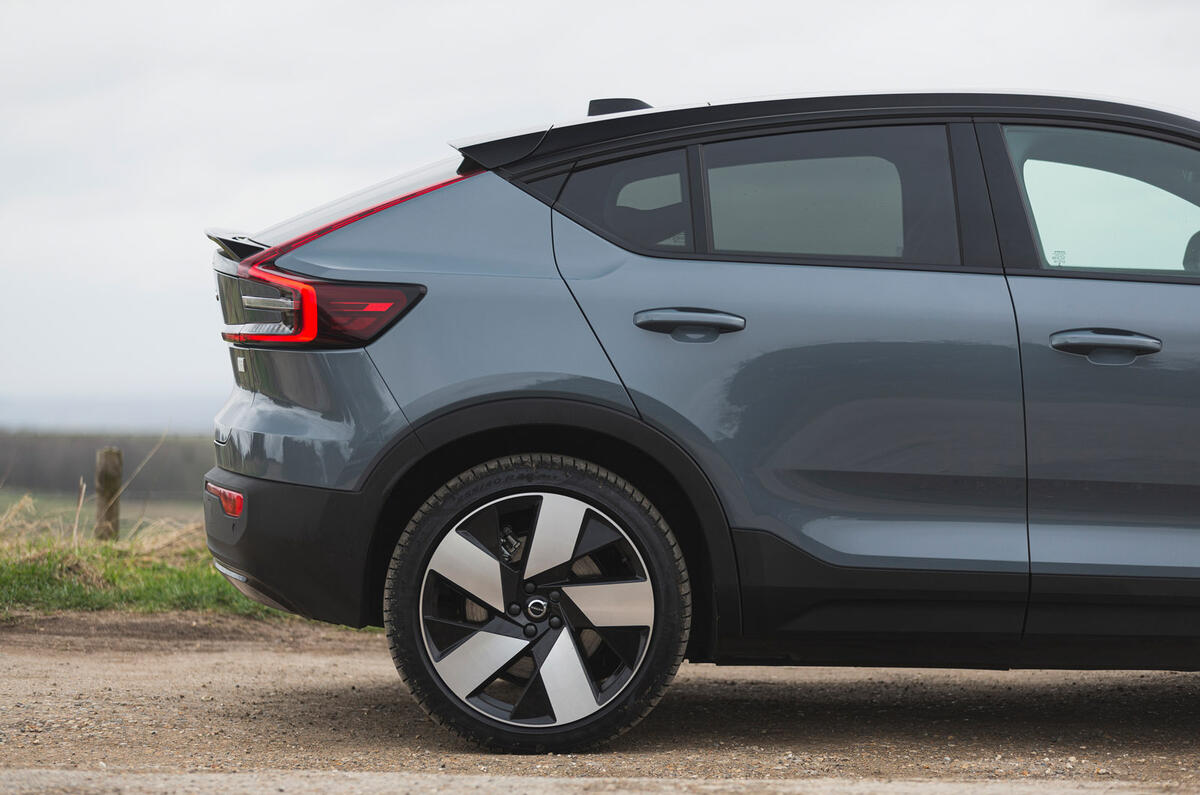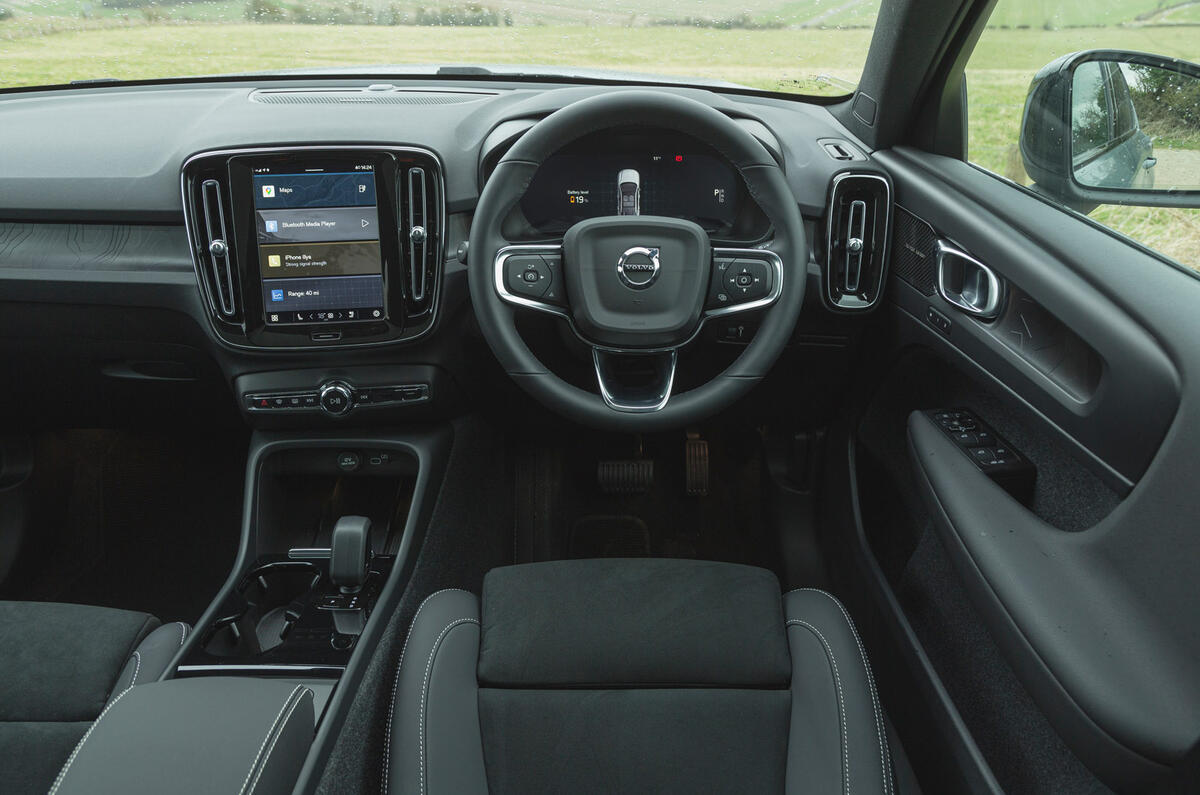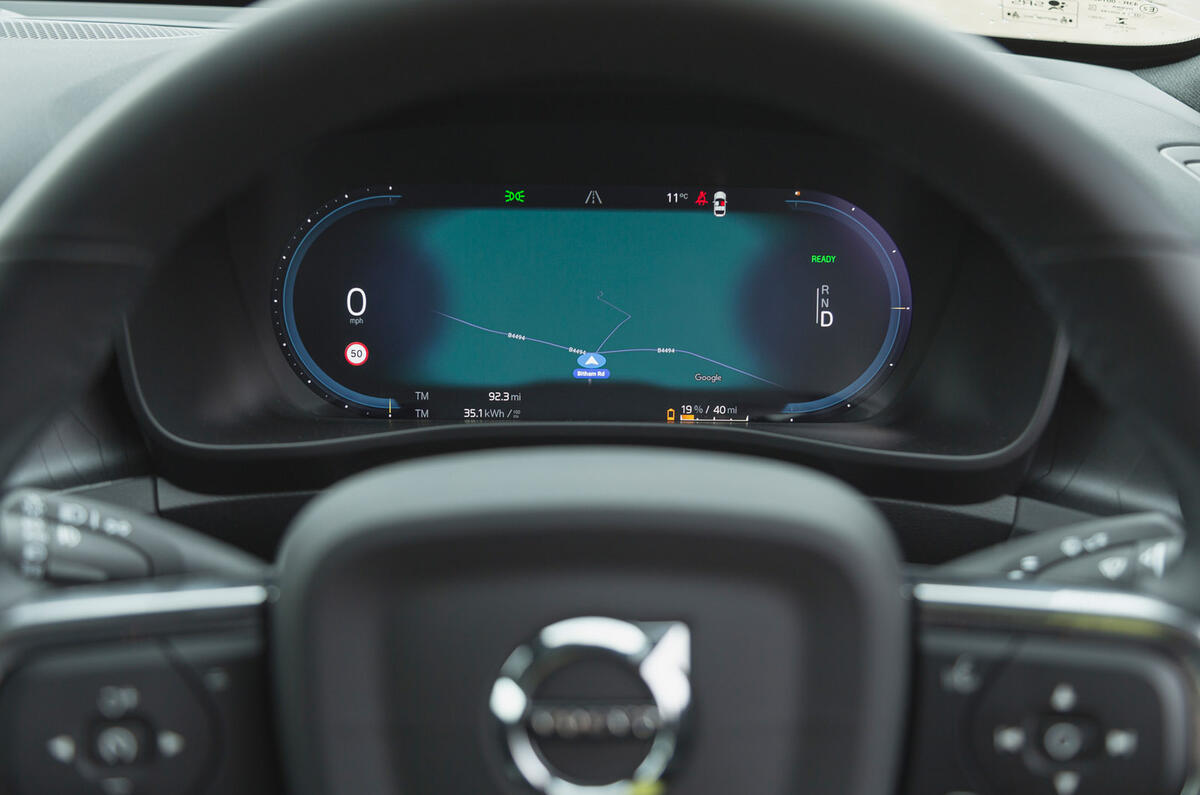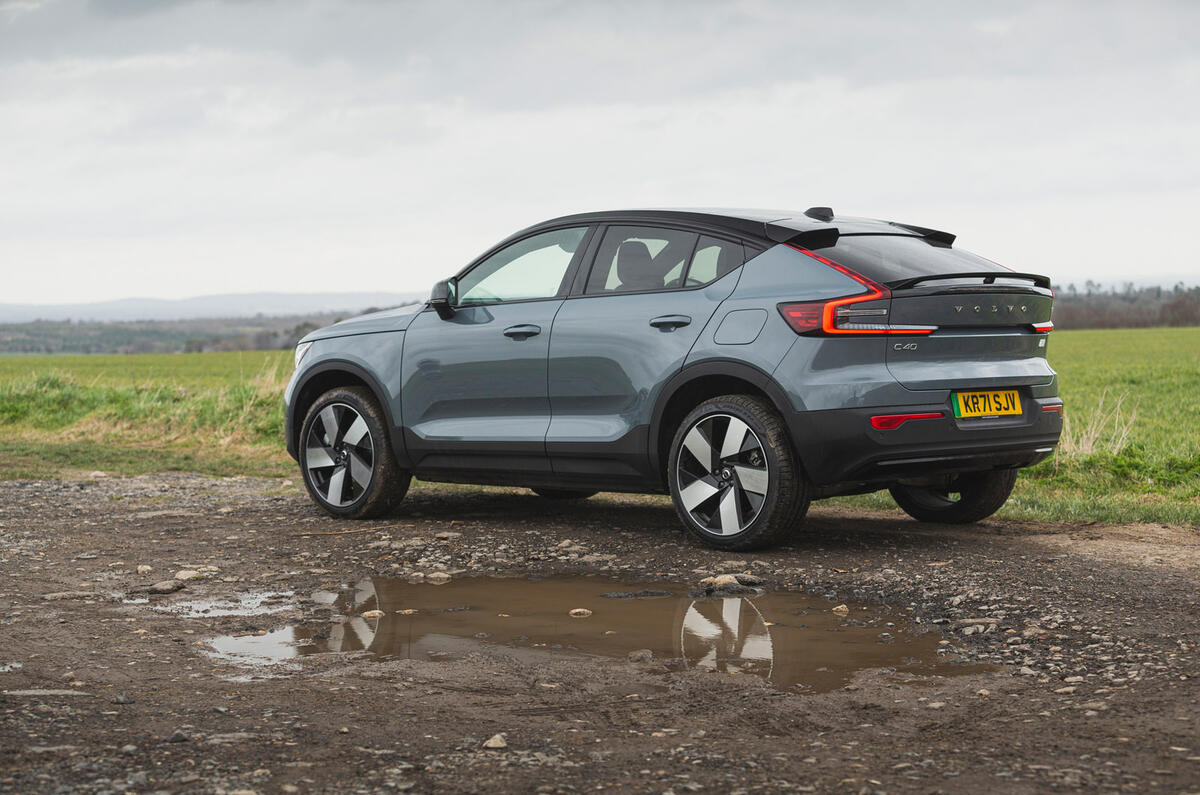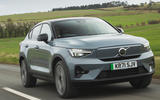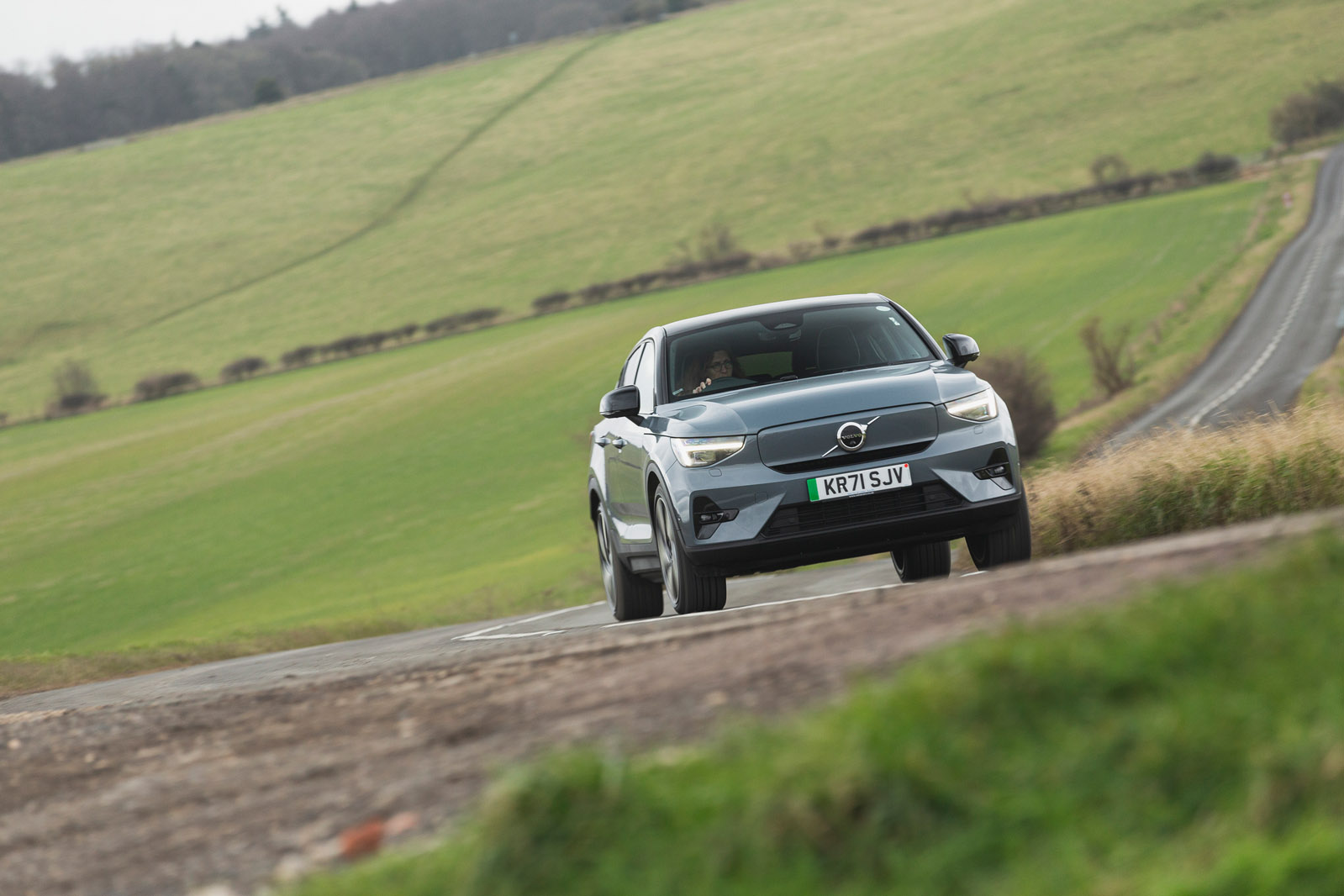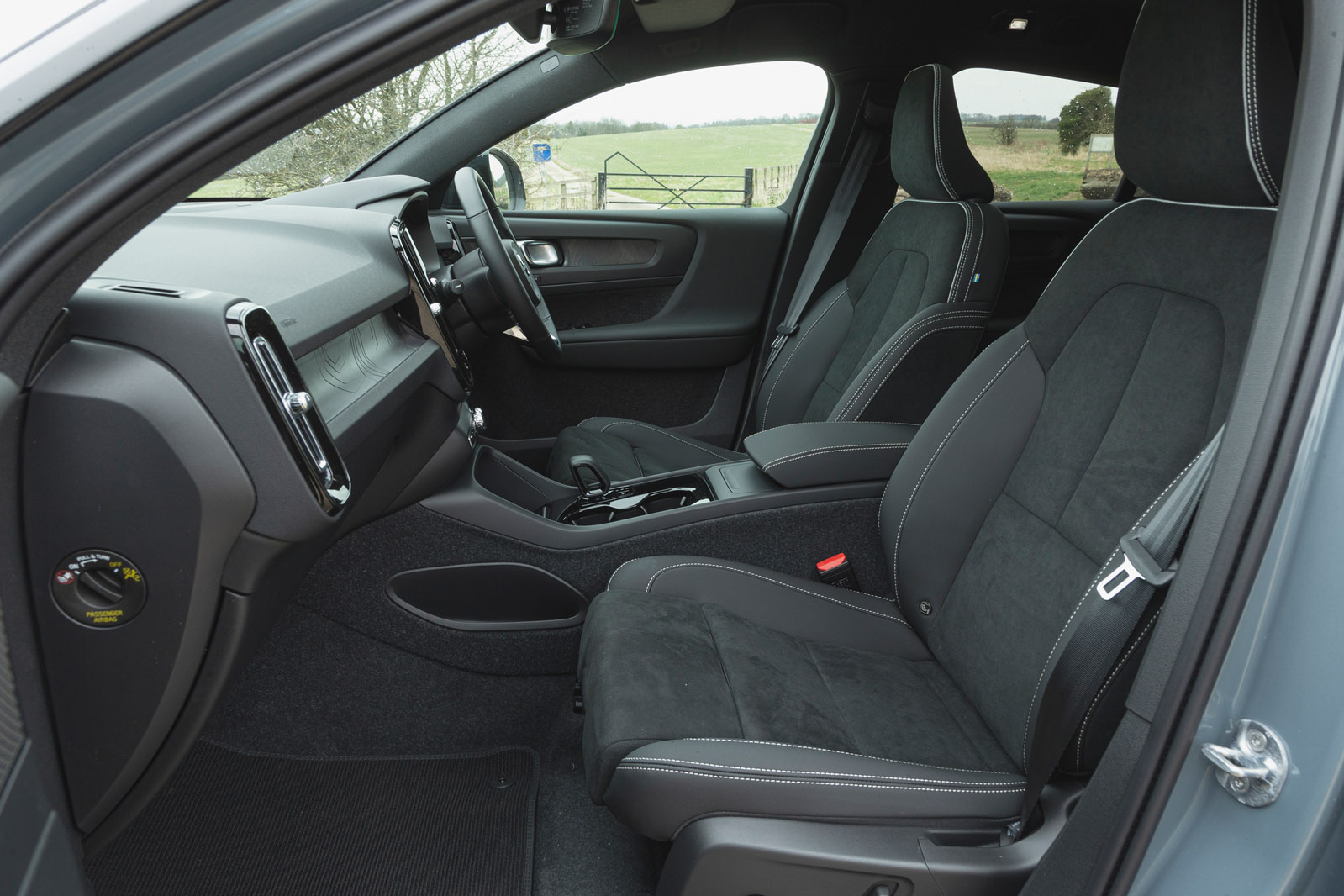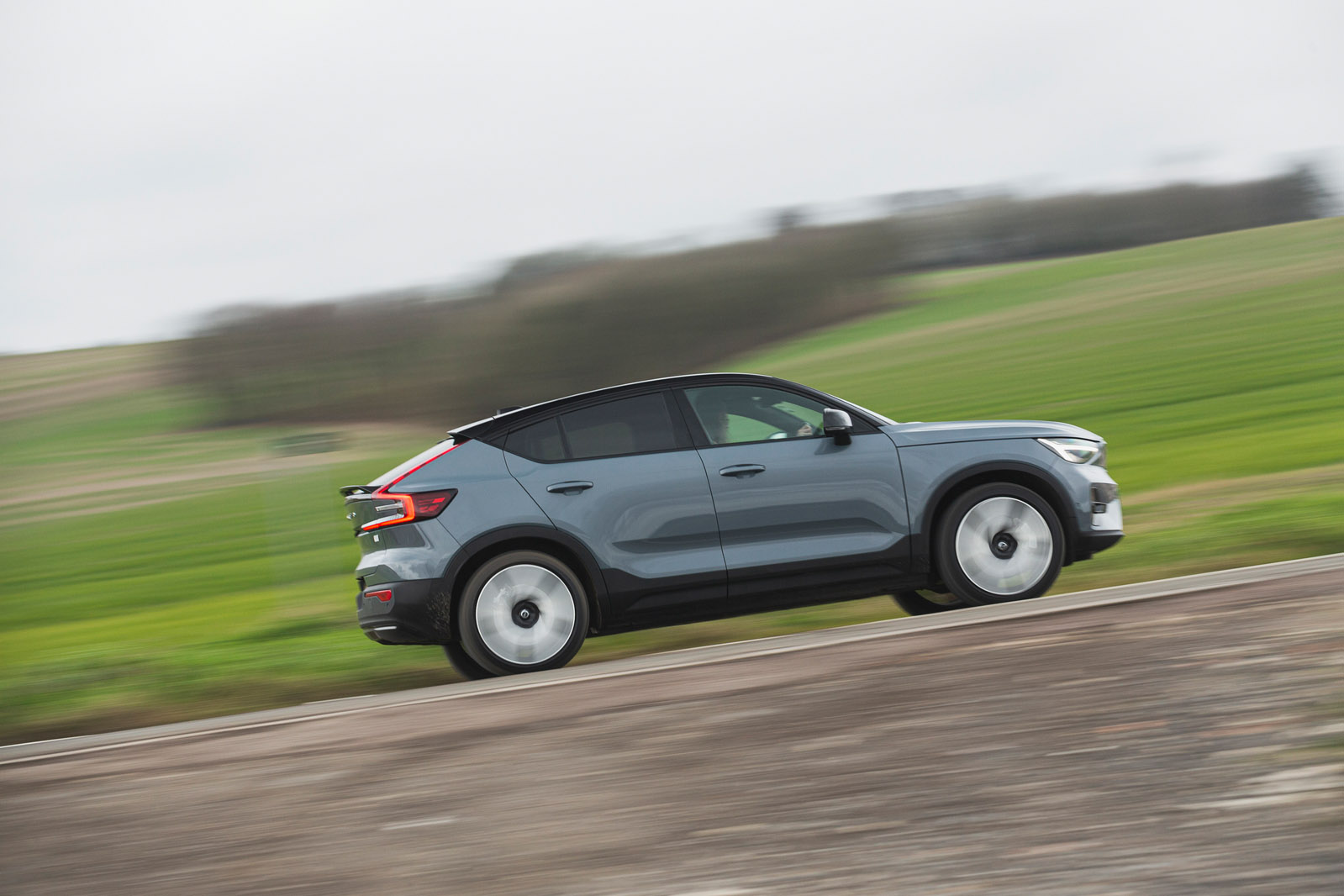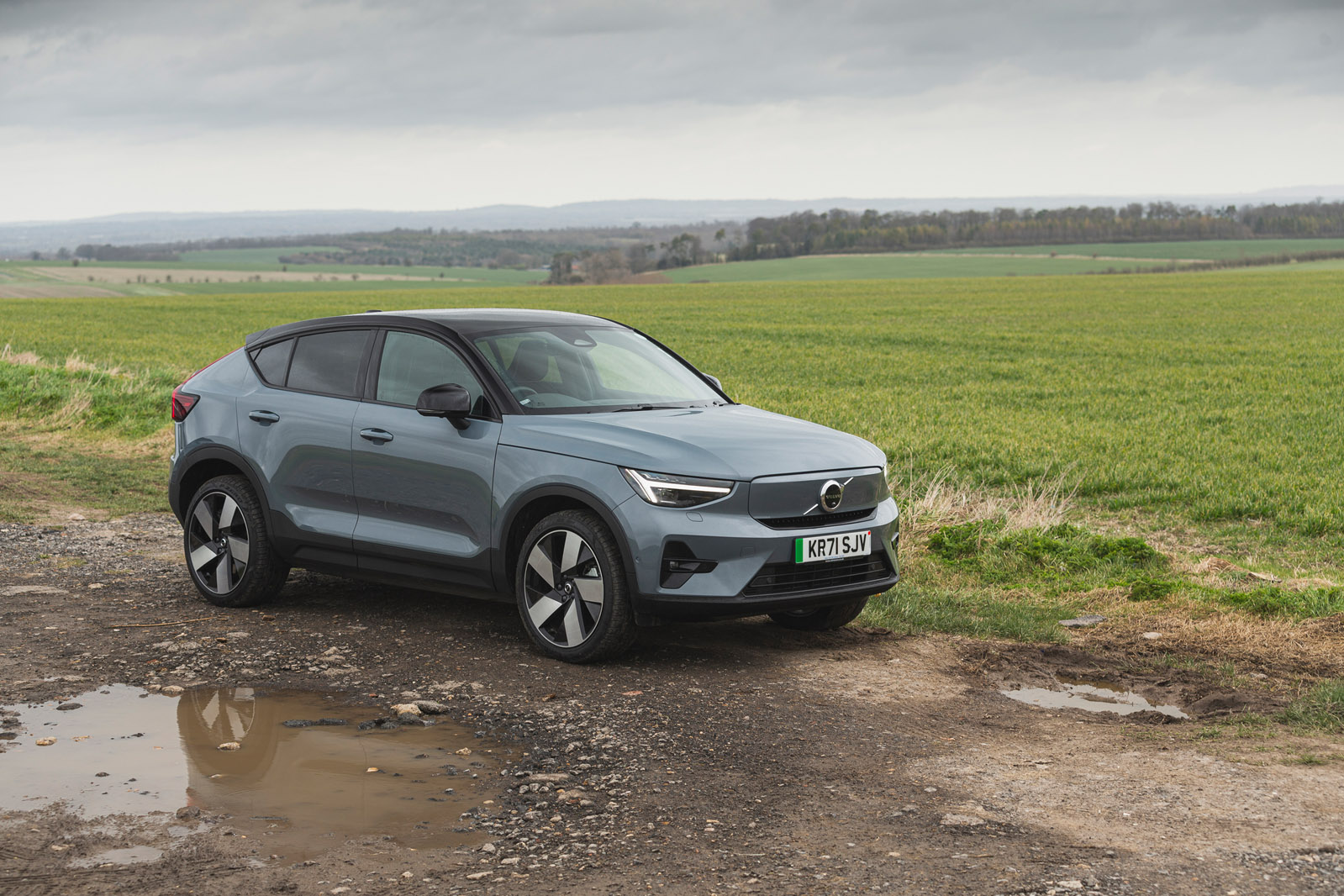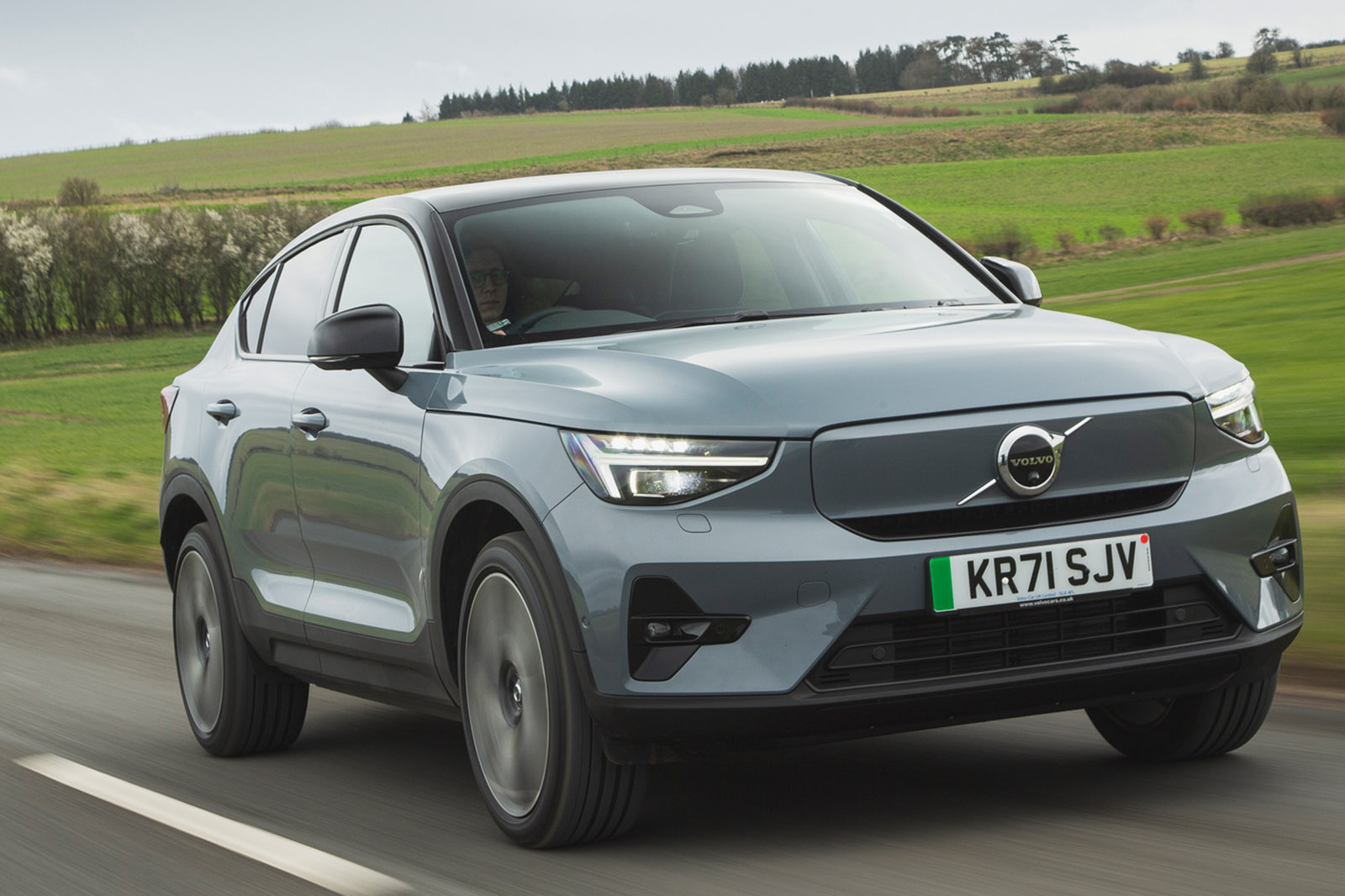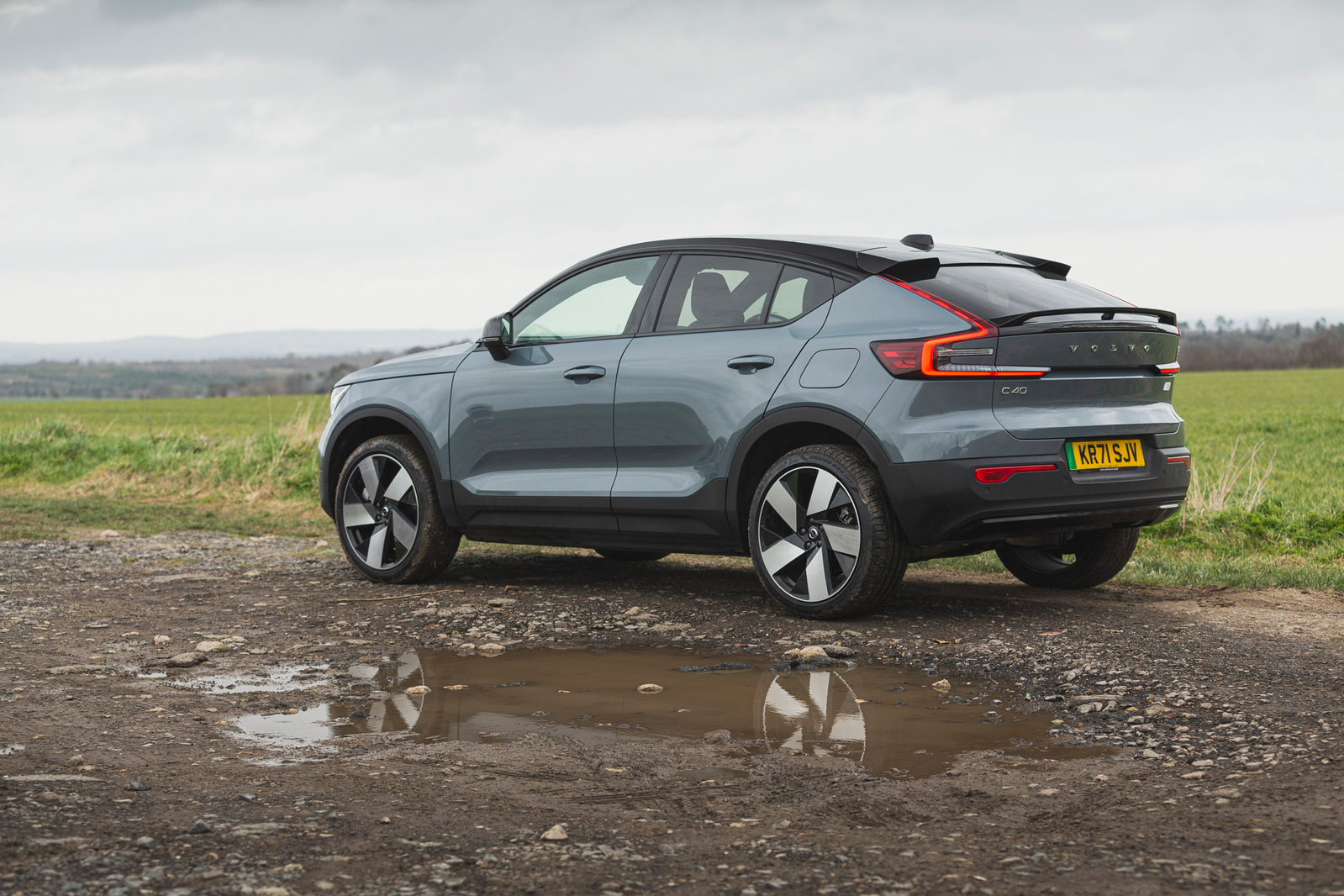The Volvo C40’s cabin will be immediately familiar to anyone coming from a Volvo Volvo XC40. A bit too familiar. We rated the XC40’s interior highly in 2018 as it was stylish and classy for a £40,000 car. Now that a top-spec C40 is nudging £60,000, you can’t help looking at it differently.
Everything is solidly screwed together, the switches feel nicely damped and the door handles operate with a satisfying mechanical clunk. However, even in 2018 we remarked that there were some cheaper plastics, not just lower down but also in areas that are clearly in view and on the controls you touch.
One might hope for some natural wood trim, but all the decorative trim is plastic. Granted, the way the translucent panels light up at night in the pattern of a topographical map is an original detail, but during the day it looks like fairly plain plastic.
As with a number of recent EVs, the whole interior is leather-free, and the optional wool blend upholstery looks appealingly different. However, our car had the microsuede seats, which just don’t feel particularly expensive.
The material isn’t very breathable either, so it gets a little sweaty on long journeys. The imitation leather on the steering wheel has a similar problem, feeling more like foam rubber than nappa leather.
The space on offer in the C40 predictably mirrors what you get in an XC40, which is decent, though not exceptional for a compact SUV.
Adults can sit in the back and have plenty of knee and head room, but they won’t want to do so for very long, as the rear bench is set fairly low and leaves taller passengers’ thighs unsupported. What’s more, the C40 pales in comparison to the limo-like space that ground-up EVs such as the Tesla Model Y and Kia EV6 offer.
The C40 gives up only 39 litres of boot space to a petrol-powered XC40, and six litres to an Volvo XC40 Recharge, but at 413 litres it’s still smaller than a Kia EV6, or even a BMW iX3.
That sloping roof line may not affect the boot space in any major way, but it severely limits rear visibility. The tall rear deck blocks your sight of traffic following closely, while the roof spoiler does the same for anything in the distance.
Volvo C40 infotainment and sat-nav
At first glance, the C40’s infotainment system may not look all that different from the XC40’s older Sensus set-up, with its four-tiered home screen and similar fonts. However, under the surface it’s a completely new Google-based infotainment system. It’s already in some other Volvos and will eventually replace the older interface in all models, so it better be good.
The screen responds quickly, and once you figure out how to configure the home screen, you can tailor it to your preferences and make pretty good use of the real estate. The built-in navigation is Google Maps, so it deals with traffic well, but the voice guidance isn’t the best.
The biggest annoyance is that there is no Apple CarPlay or Android Auto phone mirroring. There’s Spotify built in, but other media players have to go through Bluetooth, meaning you can only browse media via your phone. Moreover, some of the settings menus are too fiddly.



